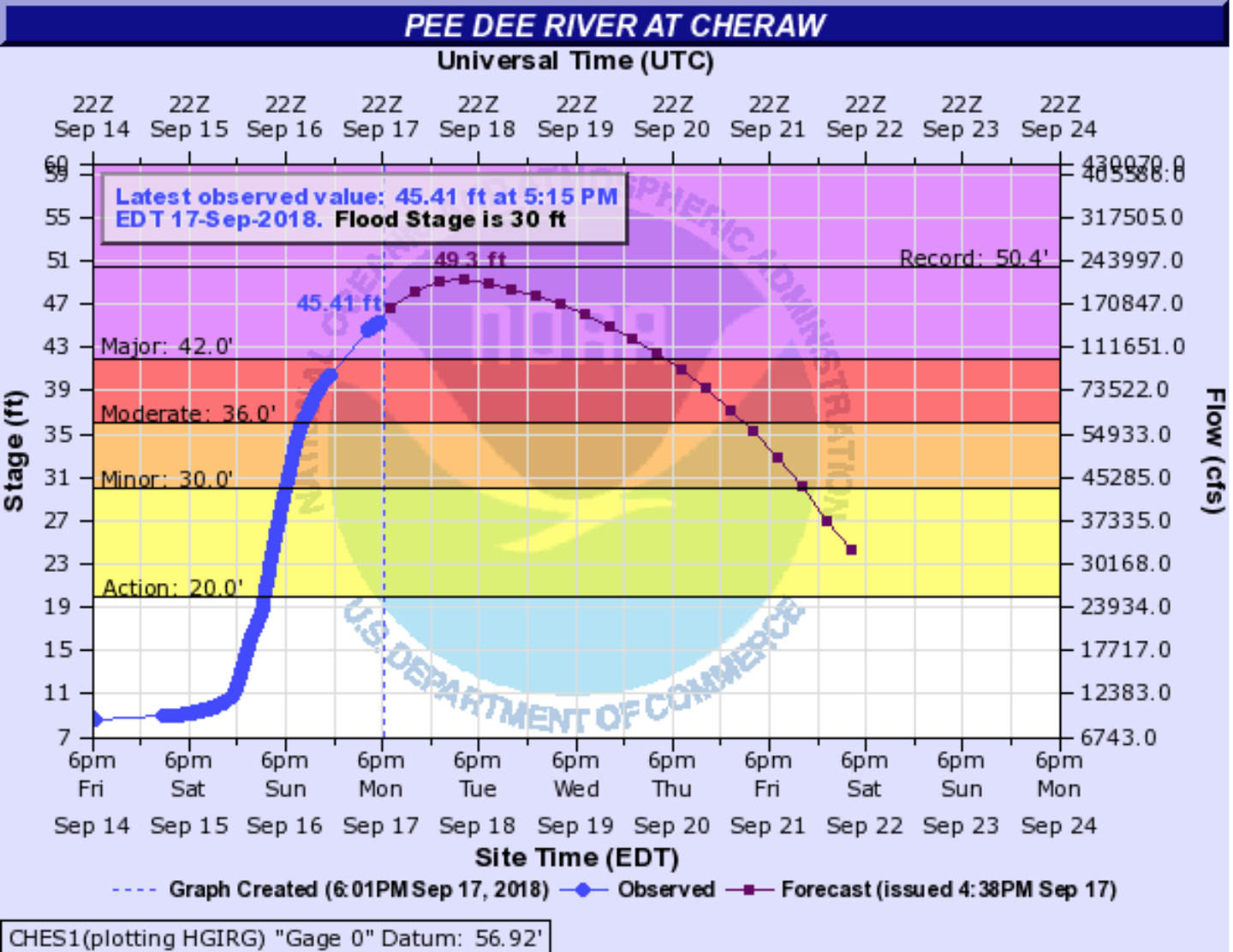River Gauge Data
Even after the winds have subsided, the flooding potential from storms can remain for several days. Nearly 60% of the deaths due to hurricane flooding have been from drownings related to inland heavy rain events. The graph shown is called a hydrograph. Hydrologists, a person that studies water and its interaction with the Earth, use hydrographs to monitor the discharge of a river at a particular fixed point with respect to time. Discharge is the volume of water flowing past a location per unit time (usually in cubic feet per second (cfs)).
These hydrographs are from some of the major rivers that experience unprecedented flooding. The extensive amount of rainfall from Hurricane Florence caused the rapid rise of river systems across portions of the Southeast, creating disastrous flooding in areas that were inland from the coast.

Source: weather.gov
The color code helps identify the intensity of flooding or potential flooding along the river:
- Near Flood Stage (yellow) ± flooding becomes a concern. River/stream is approaching or is forecast to approach the gage height (flood stage) where flooding is defined to begin. Flood stage is an established gage height for a given location at which a rise in water surface level begins to create a hazard to lives, property, or commerce.
- Minor Flooding (orange) - minimal or no property damage, but possibly some public threat.
- Moderate Flooding (red) - some inundation of structures and roads near the stream/river. Some evacuations of people and/or transfer of property to higher elevations.
- Major Flooding (violet) - extensive inundation of structures and roads. Significant evacuations of people and/or transfer of property to higher elevations.